We are no longer building saddle trees, but we have two videos about how Western saddles fit horses available on our westernsaddlefit.com website.
Things to see on a broken saddle tree
Posted by RodandDenise on December 3, 2011
We are no longer building saddle trees, but we have two videos about how Western saddles fit horses available on our westernsaddlefit.com website.
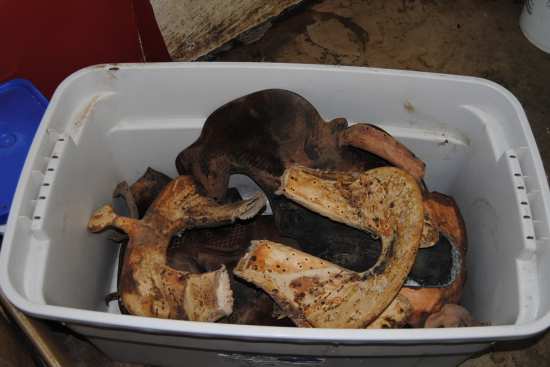
We picked up a “saddle in a tub” from the Greyhound station this week. The story on this one was that it was on a young horse that was tied to a hitching rail. The horse got a bit excited and hit the saddle fairly hard on a large post close by. And that is when the saddle had a lot more movement in it than normal. The owner really likes this saddle since it is the only one that doesn’t hurt his hips when he rides so he figured duplicating the tree is worth it for him.
Bones of the hind leg - part one
Posted by RodandDenise on November 30, 2011
We are no longer building saddle trees, but we have two videos about how Western saddles fit horses available on our westernsaddlefit.com website.
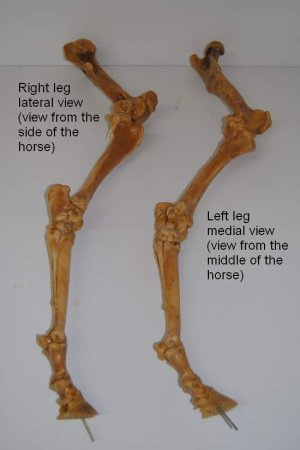
We put Arnie’s hind leg together using the same methods as we did his front leg. The bones below the hocks are very similar (but not identical) to the bones below the knees on the front leg, but the bones above the cannon bone are very different between the front and the hind.
Making rawhide isn't fun
Posted by RodandDenise on November 28, 2011
We are no longer building saddle trees, but we have two videos about how Western saddles fit horses available on our westernsaddlefit.com website.
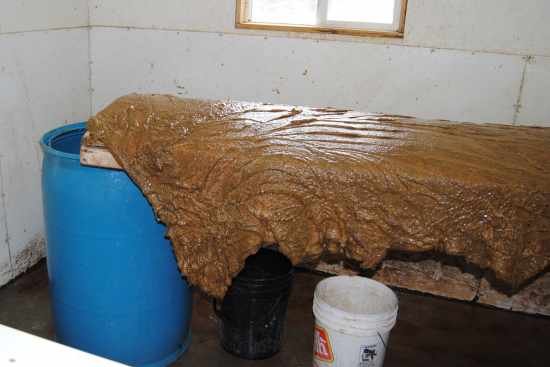
especially when confined in a small space inside the shop. But that was the biggest of the jobs for today.
Saddle fit and the bell curve
Posted by RodandDenise on November 25, 2011
We are no longer building saddle trees, but we have two videos about how Western saddles fit horses available on our westernsaddlefit.com website.
We had another discussion within the last week with a customer who is wondering if a tree that fits “this horse” can be used on other horses. So I sent him this explanation, based on bell curves, which comes out of the seminar we taught to a class of saddle makers at the Sheridan leather show this past spring.
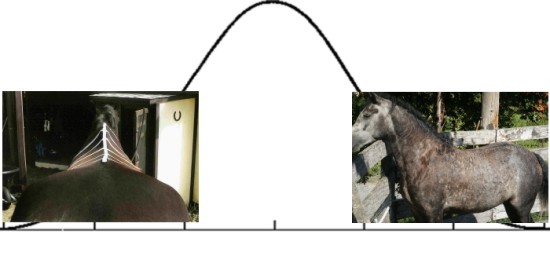
Four Wades - or are they?
Posted by RodandDenise on November 23, 2011
We are no longer building saddle trees, but we have two videos about how Western saddles fit horses available on our westernsaddlefit.com website.
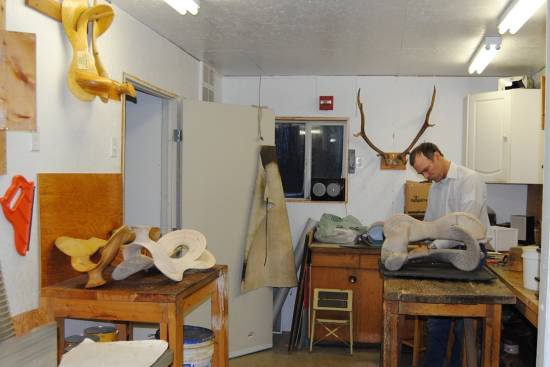 This was Rod about 5 pm last Saturday, finishing up rawhiding the first of four Wade trees. The one on the wall has all its coats of varnish done. The two on the table still need two and three coats of varnish respectively. Of these trees, two are going to Idaho (different makers), one to California and one is staying in Alberta. Wades are still the number one tree style that we build. But wait... Look at that one hanging on the wall again. Is it really a Wade?
This was Rod about 5 pm last Saturday, finishing up rawhiding the first of four Wade trees. The one on the wall has all its coats of varnish done. The two on the table still need two and three coats of varnish respectively. Of these trees, two are going to Idaho (different makers), one to California and one is staying in Alberta. Wades are still the number one tree style that we build. But wait... Look at that one hanging on the wall again. Is it really a Wade?
False "saddle fit rules" regarding the shoulder blades
Posted by RodandDenise on November 18, 2011
We are no longer building saddle trees, but we have two videos about how Western saddles fit horses available on our westernsaddlefit.com website.
As you read books or the internet, you will find lists of “saddle fit rules” that everyone is supposed to follow or check when determining how well a saddle will work on a horse. These come from many different sources. A lot are ideas transferred from English saddles to Western saddles by people who don’t understand the difference. Some come from statements made or published by people with Dr. in front of their name, even though they have no research backing them. Some are ideas that seem on the surface to make sense, but practically, some do and some don’t. And honestly, many of these “rules” are just simply wrong. With the information in these previous posts, I think you will now understand why.
A Charro saddle tree
Posted by RodandDenise on November 16, 2011
We are no longer building saddle trees, but we have two videos about how Western saddles fit horses available on our westernsaddlefit.com website.
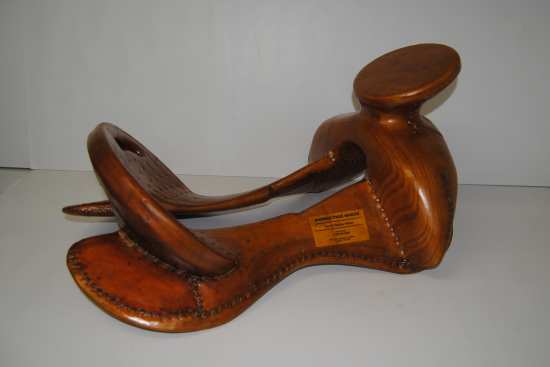
Earlier this fall we built a Charro tree, named because this is the style ridden by traditional Mexican horsemen, or Charros. In our research we found that there is a lot of variety in the traditional Charro saddles. This makes sense because according to Frederic Remington, a writer from the late 1800s who rode with the Mexican riders of the day, they only ordered the iron rings and then made their own trees and saddles. So when we see pictures of the old Charro saddles, there are some that have extremely wide forks and some that are actually slick forks. This means that there is no single style that is “the traditional Charro saddle tree”.
Today in the shop
Posted by RodandDenise on November 14, 2011
We are no longer building saddle trees, but we have two videos about how Western saddles fit horses available on our westernsaddlefit.com website.
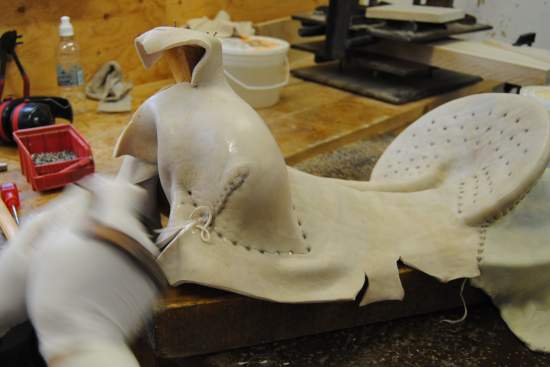
Rod is finishing rawhiding the trees he had built before we went to Edmonton to the Artisans Show at the Heritage Ranch Rodeo. Here he is stitching the front seams of a lighter weight hide on a 12” wood post Packer tree. This tree is going to a local lady and she is concerned about weight, so we are using a lighter cow hide to cover it and chose a lighter weight board for the bars . The individual boards vary in density and therefore in weight. When we find a light one we label it and set it aside to use in trees that are ordered to be lighter in weight.
Movement of the shoulder blades and saddle fit
Posted by RodandDenise on November 11, 2011
We are no longer building saddle trees, but we have two videos about how Western saddles fit horses available on our westernsaddlefit.com website.
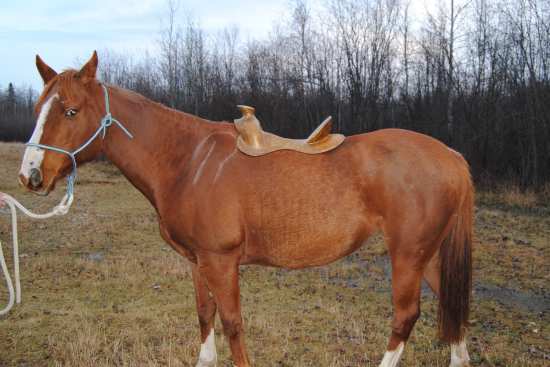
As we discussed in the last post on anatomy, the back corner of the shoulder blade rotates down and back when the horse extends his leg forward. So how do we fit a saddle behind the shoulder blade and yet not interfere with its movement? This is the practical question that still has not been scientifically researched, but there are some basic facts that make reasonable conclusions possible.
The Artisans Show at the Heritage Ranch Rodeo
Posted by RodandDenise on November 11, 2011
We are no longer building saddle trees, but we have two videos about how Western saddles fit horses available on our westernsaddlefit.com website.
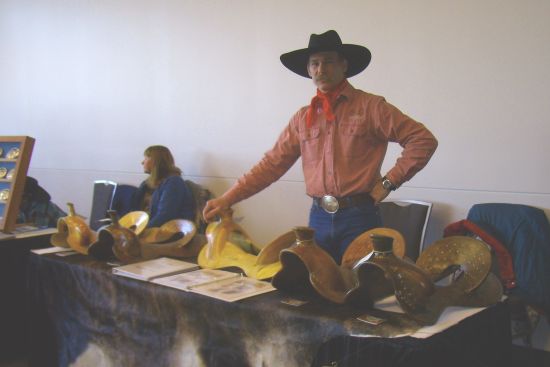 We're home again after having a table at the Heritage Ranch Rodeo Artisans show in Edmonton from November 6 to 8th. The show had two silversmiths (Richard Brooks and Kelly McRae), two rawhide braiders (Wayne Beven, John Loree), a western photographer (Kim Taylor) and four saddle makers as well as ourselves. Here's how our table looked with Rod standing there, waiting to talk to anyone who came by.
We're home again after having a table at the Heritage Ranch Rodeo Artisans show in Edmonton from November 6 to 8th. The show had two silversmiths (Richard Brooks and Kelly McRae), two rawhide braiders (Wayne Beven, John Loree), a western photographer (Kim Taylor) and four saddle makers as well as ourselves. Here's how our table looked with Rod standing there, waiting to talk to anyone who came by.
